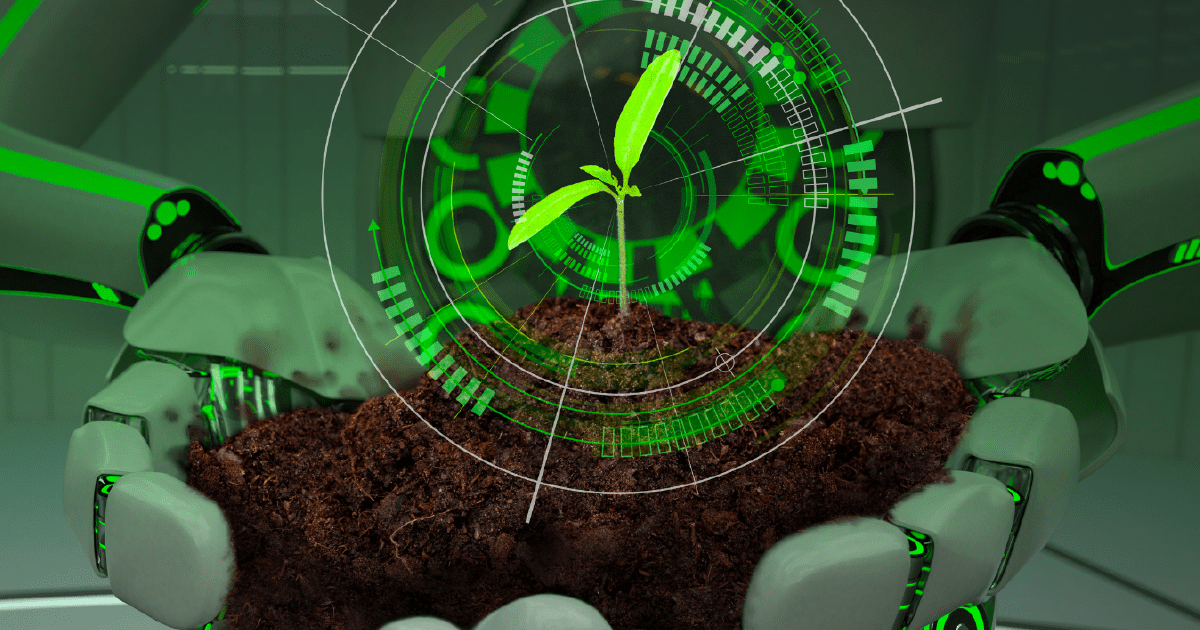
All throughout the world, industrial processes are being increasingly redefined by IoT and AI. Smart energy grids, predictive maintenance sensors, and wearable gadgets like smartwatches and AR/VR goggles—IoT and AI have combined to unleash the potential of data quicker than ever.
No sector of the economy is exempt from the advantages that IoT and AI have to offer. It is not different in the case of agriculture.
These technologies have successfully transformed the agriculture sector in unimaginable ways, addressing the most prevalent issue the world is currently experiencing—bridging the gap between food demand and supply.
For the farming sector, it is vital to utilize technologies like artificial intelligence (AI), machine learning (ML), the internet of things (IoT), analytics, and blockchain. In addition to fostering intelligent agriculture, it also reduces stake and input costs by 40–60%, boosting savings and output while preserving the fertility of the ground.
As per a recent report, AI in agriculture will expand at a CAGR of 25.5% and reach 4 billion dollars by 2026. Growing food demand and the depletion of natural resources are the main forces behind AI in agriculture. Technological advancement has brought in a new revolution in the industry as new stakeholders are putting their feet forward to join this agricultural revolution. By hiring a top-notch agtech mobile app development company in USA, businesses are now getting developed a scalable agtech software solution that aims to streamline the farming process.
How is AI Redefining Agricultural Practices?
The use of AI in agriculture is still in its infancy. The technology has the power to significantly enhance agricultural consulting services, assist farmers, and offer impartiality and transparency to value chains after harvest. A large number of startups are thriving in the area as a result of the possibility.
- Crop and Soil Monitoring
Crop and soil monitoring has historically relied on human observation and assessment to identify crop health and soil quality. Yet, this approach is neither precise nor timely.
Alternatively, we can now acquire aerial image data with drones (UAVs) and train computer vision models to use it for informed crop and soil status monitoring.
This data can be analyzed and interpreted by visual sensing AI to:
- Track crop health and anticipate yields with accuracy
- Quickly identify crop malnutrition compared to people
Farmers may take rapid action by using AI models to alert them to specific issue regions. With agriculture software development, farmers can leverage the advantages of AI when it comes to crop planning, reporting, inventory, accounting, and equipment maintenance.
- Crop Maturity Observation
The kind of labor-intensive task that manual observation of wheat head growth stages falls under is exactly the kind that AI can assist with in precision agriculture.
Researchers were able to construct a “two-step coarse-to-fine wheat ear identification system” by gathering photos of wheat over the course of three years and in various lighting conditions at various “heading” phases.
The farmers no longer needed to make daily trips out into the fields to inspect their crops because this AI model could then more precisely identify wheat growth stages than human observation.
- Detection of Insect and Plant Diseases
It has always been noticed how AI and ML can detect and analyze crop fertility or maturity and soil quality, but what about crop conditions that are less predictable?
Thanks to the advent of AI, that can now automatically detect plant illnesses and pests using deep learning-based picture recognition technology. This works by creating models that can “keep an eye” on plant health using picture classification, detection, and segmentation methods.
- Intelligent Spraying
Computer vision is effective in identifying agricultural problems, but it can also aid in their prevention. Drones with computer vision AI provide automated uniform fertilizer or pesticide application throughout a field.
UAV sprayers are able to function with high precision both in terms of the area and volume to be sprayed, thanks to real-time detection of target spraying areas. As a result, there is a considerably lower chance of poisoning water supplies, crops, people, and animals.
- Unmanned Weeding
Not every AI is getting into weeding as intelligent sprayers are. Some AI-based robots are removing undesirable plants in even more direct ways.
But, weed detection doesn’t truly free up much effort for the farmer compared to computer vision’s ability to detect a bug or an unusually behaved chicken. The AI must locate and get rid of the weed in order to be even more helpful.
The Future of AI in Agriculture
In order to improve training and validation of scaling solutions that employ satellite data, agritech experts predict that in the future, agritech businesses will also be increasingly using artificial intelligence (AI) to help crop insurance and loans.
There will be more opportunities to employ AI for quick ground yield evaluation due to the significant variation in crop cultivated, types, staggered sowing periods, and the time-consuming nature of traditional crop-cutting trials for yield assessments.
If you are into the agriculture business and want an automated software solution for streamlining your operations, then get started with a proficient agriculture software development company today!
